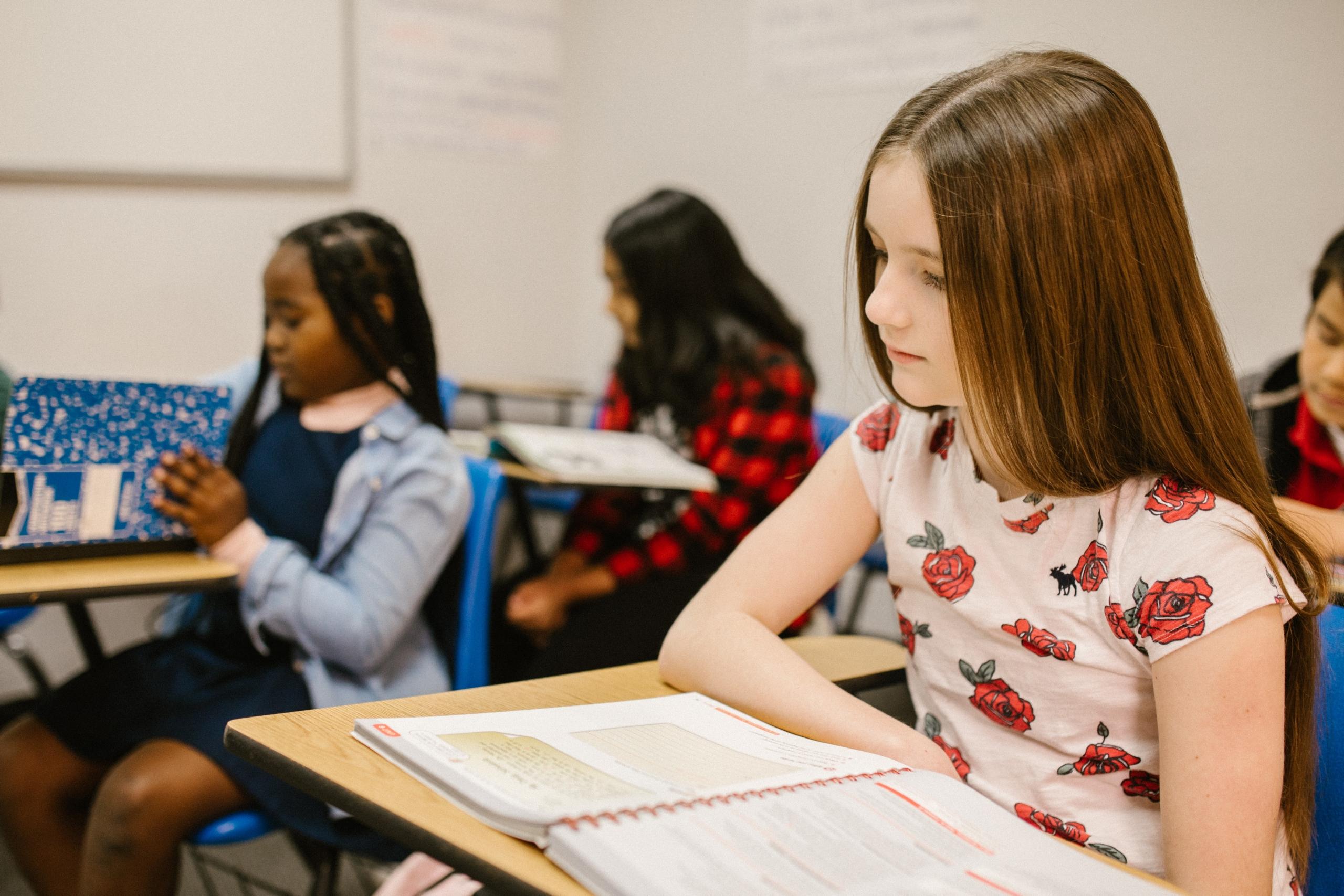Behaviour is the mirror in which everyone shows their image.
Johann Wolfgang von Goethe
The Tools to Create a Better Classroom
- A sound behaviour management plan is an asset to any teacher.
- The goal is to encourage positive classroom behaviour.
- Understanding what motivates behaviour gives you the tools to deal with it.
- By supporting students you can help them develop self-regulation skills.
- Getting learners to deal with their emotions well can assist considerably with behaviour management.
Having spent some time with children in a classroom setting, you may have learned some very interesting things about behaviour management. In all probability, you may have found things out the hard way.
Managing student behaviour in the classroom is crucial to the success of any lesson as children are not always going to behave in the way that you like them to. Your goal, as a teacher, should always be to encourage positive classroom behaviour. Being equipped with the right tools may help considerably.
Misbehaviour, which may be loosely defined as not conforming to the rules of the classroom, is something that can be expected from children.
Even adults sometimes goof off during a session in the classroom, especially when all they have to do is sit, especially for extended periods. Misbehaviour, or undesirable behaviour, is to a degree dependent on the nature of the set of rules which are in place.
If you want your learners to learn, you must encourage and reward positive classroom behaviour.
Behaviour management in schools is crucial. Each school, along with all its stakeholders – children, parents and all members of staff - must develop a solid behaviour management plan.
Want to give private lessons?
Join the Superprof community and share your knowledge with inquiring and motivated students.
Why is it Important to Manage Behaviour in Schools?
Managing student behaviour in the classroom must be seen as one of the pillars upon which a sound education is built. A solid behaviour management plan is one of the greatest tools in any teacher’s toolkit of skills and resources.
With time, you, the teacher, will come to terms with a wide range of behaviours that may arise in the classroom, sometimes seemingly out of nowhere!
Something that will help you along the way is reviewing the literature written on the very interesting topic of behaviour management.
There are, of course, mountains of it: theories on behaviour management and what makes people behave the way that they do, thoughts on what motivates good behaviour and studies that consider behavioural problems and ways to change, modify or direct behaviour.
We are going to be taking a closer look at the first point in the above list: the theories of behaviour management - that education experts, psychologists and educators have examined and developed to appreciate what motivates behaviour and how best to deal with it.
What is Behaviour Management Learning Theory?
If they do it often, it isn't a mistake; its just their behaviour.
Dr. Steve Maraboli

Behaviour management is far more than just discipline, punishing unwanted or disruptive behaviour and rewarding good behaviour. Yes, these are several of the techniques which are generally employed. There is, however, far more to the management of behaviour than mere punishment or dishing out rewards.
2021 study about bullying in South African schools suggested that:
of students have reported being bullied.
Behavioural learning theory, also known as behaviourism in education, is an area of psychology that focuses on how individuals learn through their interactions with their environments. Behaviourism is based on the premise that human behaviours are acquired through the process of conditioning, which involves reinforcement and punishment.
In essence, behaviour management is about teachers utilising methods and strategies to ensure that children benefit maximally from their schooling. It is about creating an environment within which all children – not only the ‘well-behaved’ ones – can achieve their own version of success.
So, behaviour management is not about handing out a stamp or a sticker to reward good behaviour. Neither is it earning detention as a consequence of bad behaviour. It is, rather, about getting to the bottom of what makes kids behave in the way that they do and guiding them towards achievement and agreeable behaviour.
Knowing the root cause of repetitive bad behaviour can help us stop the bad behaviour and cause our children to stop breaking the school's code of conduct.
What does it actually mean?
As with so many other topics, not all the experts agree on what constitutes good behaviour management. So, let's look at some of the biggest names in pedagogy and education to find their takes on the subject.
Want to give private lessons?
Join the Superprof community and share your knowledge with inquiring and motivated students.
Why is it Necessary to Learn About Behaviour Management?
Let’s first unpack why teachers should be paying attention to these academic concepts.
Some may think that the problem with concepts or theories is that they are constantly being reviewed, revised and adjusted. This is true, as is the fact that concepts should always be questioned, re-evaluated and tweaked as new information comes to light.
What is important is that a teacher cannot simply walk into a classroom without some background into what makes children behave in particular ways, what may set them off and what methods one can employ to bring them back to a state of calm and co-operativeness.
Having a knowledge of theories of personality and learning, as well as understanding the cognitive theories which underpin these ideas, is critical to managing behaviour in the classroom.
The Theory Does Impact on Teaching Practice
Here is a very simple example of how the theory behind behaviour management can be beneficial.
Managing student behaviour in the classroom is one of the pillars upon which a sound education is built.
A solid behaviour management plan is one of the greatest tools in any teacher’s toolkit of skills and resources. This plan and knowledge of the supporting theory will help the teacher, even a novice, to establish a great rapport with his or her learners and bring about an understanding of what drives their behaviour.
Across the world, behaviour management theory has informed best teaching practices. It has also resulted in changes in the way that children are treated. They are no longer seen as objects that need to sit quietly or be caned, but as a responsive community of individuals who have their own desires, wills and concerns.
Right there is a great reason for having a knowledge of behaviour management theory: the fact that children are listened to and understood.
Considering these theories and examining yourself, can bring about a greater understanding of the children you are working with.
Behaviour Management Theorists and Their Theories
Here follows a list of behaviour theorists and the theories to which they are most closely associated.
B.F. Skinner and the Theory of Operant Conditioning
One of the biggest names in the annals of behaviour management, B.F. Skinner espoused the concept of operant conditioning. This was a development of and a response to classical conditioning, a rather radical concept.
This theory runs on the premise that a neutral stimulus in a setting can lead to a conditioned response. In the case of Pavlov’s dog, a bell is rung and a dog is presented with food. The dog starts salivating every time the bell is rung, whether it is given food or not.
However, this does not actually describe a behaviour, but, rather, an automatic response.
Positive Reinforcement
Skinner’s theory was based on the idea of Edward Thorndike, who advanced the psychology principle known as the law of effect.
This resulted in Skinnner’s most well-known contributions in the field of behaviour management: positive- and negative reinforcement. An example of positive reinforcement is when a child is rewarded for doing his or her homework. Negative reinforcement is when a punishment is removed: you did your homework so you don’t have to wash Dad’s car.
We can look at 5 activities to use when using positive reinforcement in the classroom.
What is important about this idea?
Skinner was not keen on punishment being used. Rather, he felt that the environment had to be managed and that the child’s behaviour would be the consequence of that created environment.

William Glasser and the Theory of Choice
Very influential ideas were also proposed by William Glasser. Glasser was a psychiatrist who developed psychological theories on behaviour in the classroom. He introduced the idea that all behaviour is a result of choice.
His idea, with his choice theory, was that you could tell a child what to do but, in so doing, you were merely passing along information. Whether the child did as you had instructed or not was a matter of choice.
Further, he stated that people are motivated by five basic needs:
Freedom
Fun
Survival
Power
Belonging and Love
According to him, activities in the classroom have to satisfy these needs: teachers have to assure learners that the activities are worthwhile – while developing or enlarging their sense of belonging in the classroom.
You can, however, not make the child do anything; the child has to come to the decision using his free will.
Alfie Kohn’s Theory of Student Directed Learning
In the field of behaviour management, Alfie Kohn has himself courted controversy. His critiques of Skinner’s negative and positive reinforcement have, however, introduced very important elements into the debate.
Kohn’s idea was that learning should be student-directed. He held that learning should not be about receiving information, but about making meaning. Further, he stated that it has to be driven by co-operation and curiosity, not by a standardised and distant curriculum.
He felt that extrinsic motivation was far too common in the classroom and that intrinsic motivation was far more desirable. The motivators which were located within the learnings themselves were extremely important; properly utilised, they would displace punishments.

The Social Learning Theory of Albert Bandura
The work of Albert Bandura takes us back to the start, in a sense, since he draws in elements of the work of all the aforementioned theorists.
His social learning theory states that people procure or take on behaviour that they have observed in their environment and then start imitating that behaviour. Thus, if a child sees his classmate rewarded for a particular behaviour he may follow suit to receive the same reward, which may be a word of praise, not necessarily a physical reward.
Using Behaviour Management Techniques in Your Classroom
Behaviour management practices are crucial for creating positive learning environments and ensuring that interactions in the classroom are conducive to learning.
A key to applying Behaviour Management Theory in your classroom is understanding human behaviour principles and how behaviour can be guided through the use of targeted strategies.
Establishing clear expectations of students is a vital component of behaviour management.
If you set firm, consistent rules for the class, it helps students understand their boundaries and the consequences of their actions.
Remember that with Behaviour Management Theory the focus is on positive reinforcement. As a teacher, you should acknowledge and reward your students for good behaviour, thereby encouraging them to repeat it.
Rewards for good behaviour could include granting privileges or simply vocalising praise of the student.
It is also important to ensure that you define and communicate consequences for inappropriate behaviour. These consequences should be reasonable and could include giving the student additional tasks or taking away certain privileges.
Both rewards and consequences help students connect their behaviour to specific outcomes, and this should encourage accountability.
Consistency is key to success! Students need to know exactly what the rules and behaviour requirements are and should be able to predict with certainty the outcomes of positive and negative behaviour.
Following from consistency, it is paramount to build student-teacher relationships that are based on trust and respect. Students are more likely to engage with you positively if they feel they are valued and respected.
Understanding Behaviour Management Theory provides you with the tools to combat potential issues before they arise. For example, you might change the layout or seating plan of the classroom to make the environment more conducive to learning and to reduce potential distractions.
Benefits of Using Behavioural Learning Model
Lee and Marlene Carter advocated assertive discipline whereby the rights of children and teachers are being taken care of in the classroom setting.
There are many benefits to implementing a behavioural learning model in the classroom, and some of these are set out below.
We hope that you can see the value of familiarising yourself with some of the above-mentioned theories as they will, without a doubt, help with managing student behaviour in the classroom.
Behaviour management in schools should receive far greater attention if South Africa is to turn to tide against violence, bullying and disruptive behaviour in the classrooms, corridors and playgrounds of its schools. You could become an agent of that change! The key thing to remember is to keep up with behaviour management strategies that align with the times and to consider punitive measures that align with the behaviour and action.
Want to give private lessons?
Join the Superprof community and share your knowledge with inquiring and motivated students.






